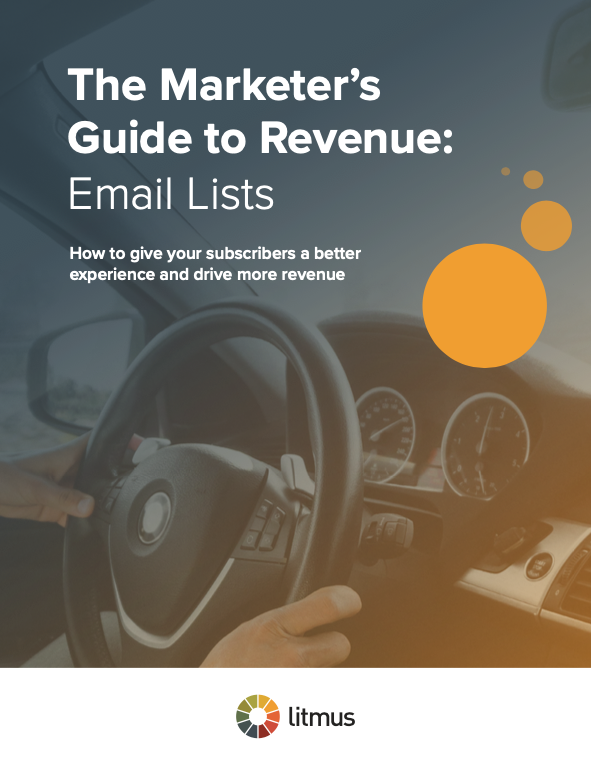3 Email Reports Marketing Leaders Should Look At With an Eye Toward the Future
The beauty of email marketing is you can immediately see results—and we often take that for granted. Back when I did huge segmented direct marketing campaigns for Epsilon, it would take months to get the results. Then I worked for an email agency called e-Dialog to do email targeting and segmentation, and the results were instant. I’ve been hooked ever since.
I’ve been in the email space for over two decades, now the VP of Email Marketing & Analytics at Oracle for the corporate marketing teams. We run the marketing technology stack that they use, making their campaigns as efficient and successful as possible with a tight analytics feedback loop.
Why the tight feedback loop? Email analytics is incredibly valuable, giving you insight into what works and what doesn’t so you can drive the right content and segmentation strategies for your campaigns.
But there’s a lot of data out there, and it can put you into analysis paralysis. So what’s a good place to start?
Top email reports every company needs to have
It’s important to block out the noise and key in on the metrics that matter most to your business. While there’s much to consider, there are three foundational reports you definitely need to make sure you have.
1. Email list health
The most critical report you must have is for monitoring your audience’s health.
What is going on with the health of your database? And this includes everything from analyses on where the most engaged and active subscribers are coming from to what’s happening over time to the size of your audience as that relates back to source. How are you growing your email list?
Audience health is super important to the fundamental performance of all of your campaigns. Without a solid database, expect everything else in your email program to suffer.
 | Healthy email list. Healthy ROI. Subscribers fuel your overall email program success. Learn how to drive email revenue, a higher ROI, and list growth—all while giving a better experience to your subscribers. |
2. Email engagement metrics
Companies tend to put too much emphasis on opens and click rates. They’re an indication of general email engagement health, but they don’t tell you how or what or what next. A great open rate just shows how flashy your subject line is. And, there’s been a lot of change on the reliability of open rates anyway because of Apple’s Mail Privacy Protection.
Now’s the time to go deeper and really understand what’s happening after the click and what’s happening with your subscribers in other channels. What are they doing when they get to the website? Draw that bigger, more holistic picture of your subscriber engagement activity.
And what I wish more marketers would look at is engagement metrics by campaign type.
So, categorizing and driving content in a way you can understand that content’s performance relative to your targeting. For example, why is your newsletter your best performing email? By looking at content types, you can help tie back to your content strategy to help drive your segmentation strategy. You just need the right categorization to organize your emails and look at them more broadly in groups.
3. Negative email metrics
Usually not as popular but still very important to understand are your negative metrics.
What are your unsubscribe rates? What are your ignore rates? Ignore rate is a huge one. It looks like someone received the email, but you don’t understand that maybe they’re moving into your dormant file or they’re maybe going to unsubscribe eventually based on their email client.
As part of the report on negative metrics, I would also look at deliverability.
Something like 15-17% of emails never make it to the inbox. So, are your emails even getting there before you can understand both your audience health and your engagement? And if subscribers are going in the direction of becoming a stale contact, what can you do to stop that? What are your trigger points along the way based on the types of inactive subscribers?
How marketing leaders can use these reports

As a marketing leader, you don’t need to get into the weeds. But having a pulse on your email analytics empowers you to:
- Direct email frequency that perhaps is causing attrition of your overall database.
- Re-evaluate your content marketing strategy, adding more of one activity or pulling back on another.
- Understand where the leaks in your email program are coming from so you can inform a plan of action for patching up the holes.
What’s next for email analytics?
It seems as if email marketing analytics has been put under the microscope quite a bit recently—and for good reason. So much has been changing and will continue to change. While you’ve got your foundational reports ready, you always need to keep an eye on what’s happening in the world of email marketing now and in the future, so you can pivot quickly.
The present
Because of the pandemic and physical distancing, everything was suddenly online. Multichannel behavioral views need to be a focus for marketers.
For example, at Oracle, we’ve had to marry all event registration systems and activities into marketing programs, driving email volume up. There’s still lots of information to glean on how people want to hear about events, so we need to take the email and event behavior we do know to our segment teams to drive the event email program.
Then, there’s all the privacy changes going on right now.
With Apple’s Mail Privacy Protection, we’ve had to take a good look at our database to understand how we were segmenting and get a baseline for our Apple Mail users. Going forward, we’re focusing on better and more robust engagement metrics, content marketing, and behavioral marketing. That includes revamping our subscriber preference centers to get zero-party data.
These privacy changes are going to keep coming, so less of a reliance on opens is better.
The future
The future of email analytics has to have all of your data points in one place.
Data silos have always been a problem everywhere. My dream reporting dashboard would have both audience level and campaign level metrics together. Normally, those two things are separate, so you can’t see them holistically. I like looking at both performance over time as well as the recently sent campaigns. I want to see if KPIs are dipping and then dive into that a bit more if I need to.
There isn’t a one-size-fits-all solution. The key here is making sure marketing, technology, and data teams are really tightly intertwined. You can pare down to what you need for your marketing programs, but you can’t get that without working with your data teams to help curate your data because there’s just too much. You need to customize and curate.
Looking even further into the future, I see marketing being more personalized to make it easier for subscribers to indicate what they want and when—and for marketers to be able to do that at scale. “Batch and blast” is still prevalent today, but through technology like artificial intelligence and machine learning, we can see the dream of a one-to-one personalized experience become reality.
But this can’t happen without content marketing.
You need to understand engagement and why your audience is engaging. You can then use that to feed your machine learning modules which will populate the right content in your emails. It’s a synergy of sorts driven by technology.
Email reporting unlocks your audience’s needs
As you’ve hopefully learned, having the right email reports in place can not only help you drive your email programs but also your marketing efforts overall. This helps you learn more about your audience and what resonates with them. Meaning, you’ll be set up for the future, come what may.
 | Create more effective emails with Litmus Are your subscribers truly engaging with your emails? Get deeper insights with Litmus Email Analytics—and empower your team to create higher-performing campaigns. |

Amy Jones
Amy Jones is the Chief Marketing Officer at Digital Aviation Solutions
